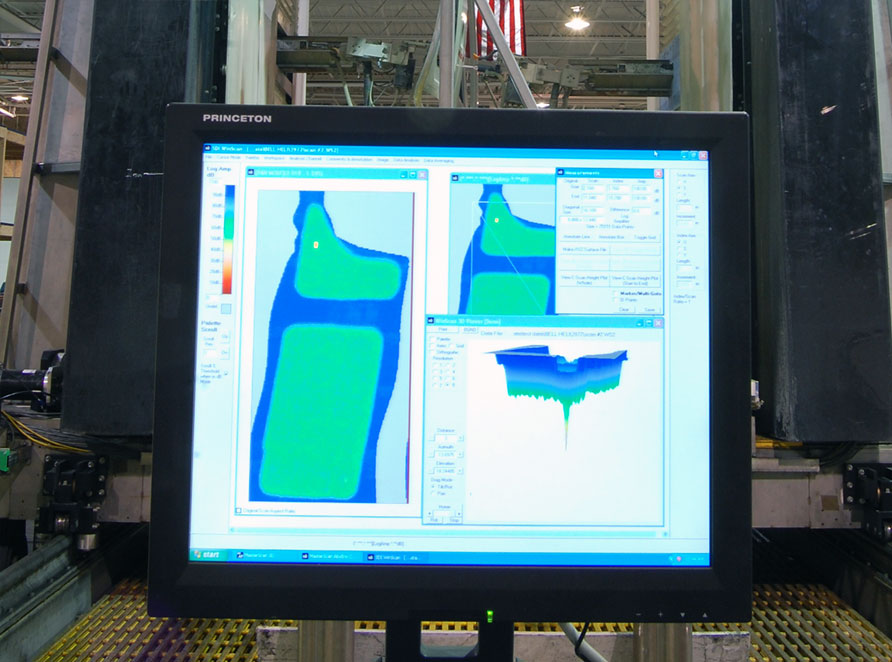NDT – an analysis technique used by industry to evaluate the properties of a material, component, structure or system without causing damage – is a more comprehensive field than many non-technician can imagine. Indeed, there are several different methods and techniques that use this general principle. Here are some of the most common NDT methods in use today.
- Ultrasonic Testing – Ultrasonic testing detects deep and extremely small flaws within certain materials. Additionally, this method uses a transducer which generates ultra-high frequency sound waves through the material. When this wave is disrupted – such as would occur in the presence of a crack or other imperfection – this is reflected and displayed on a screen. This is among the least invasive and most successful NDT and is particularly useful in the aerospace industry.
- Electromagnetic Testing (ET): This method uses electric current or a magnetic field to test machine components. The disadvantage to this kind of testing is obvious – it can only be conducted on materials that support a flow of electrical current. This means that testing something like fiber reinforced plastics is impractical.
- Ground Penetrating Radar (GPR): This NDT technique uses radar pulses to penetrate the surface of materials such as rock, ice, water or soil. The waves this method transmits are then refracted by these materials which have different electromagnetic properties. This NDT is commonly used in oil and gas, chemical and manufacturing facilities.
- Laser Testing Methods (LM): Laser testing falls into three categories including holographic testing, laser profilometry and laser shearography. Holographic testing utilizes lasers that detect changes to the surface of a material. Laser profilometry uses high speed rotating laser lights to defect conditions such as corrosion, pitting, erosion and cracks. Finally laser shearography uses the coherent and monochromatic properties of laser light to illuminate the surface of a component under investigation.
Other Forms of NDT Testing
Scientists, doctors and technicians have long discovered the practicality of NDT. Here are some other NDT methods that are in use to some degree or another in a variety of fields.
- Blue etch anodize (BEA)
- Dye penetrant inspection or liquid penetrant testing (PT or LPI)
- Electromagnetic testing (ET) or electromagnetic inspection (commonly known as “EMI”)
- Alternating current field measurement (ACFM)
- Direct current potential drop measurement (DCPD)
- Ellipsometry
- Endoscope inspection
- Guided wave testing (GWT)
- Hardness testing
- Impulse excitation technique (IET)
- Microwave imaging
- Nondestructive Testing of Packaged Items
- X-Ray, Optical and Terahertz image of a packaged IC.

As you can see, destructive testing cannot be compared to NDT. Moreover our ultrasonic testing equipment can make diagnosing systems and equipment at every stage easier and more cost efficient. Each ultrasonic inspection system on our site has itself been tested and is in use by the aerospace industry.
